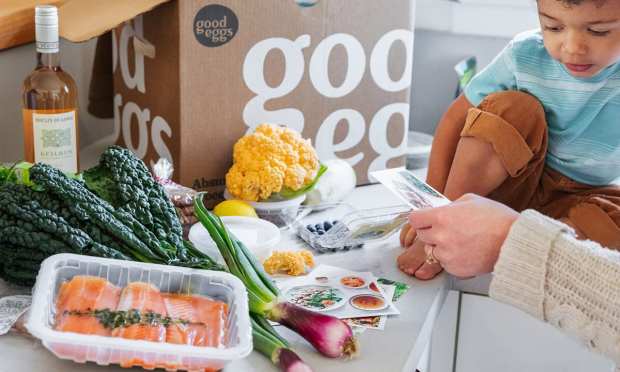Good Eggs’ Grocery Delivery Expands the Concept of Local Eating

In the last year, American consumers’ adoption of online grocery solutions has rapidly accelerated. PYMNTS research found that, by December, 23 percent of U.S. grocery shoppers were ordering online more than before the pandemic, and 64 percent of grocery shoppers reported purchasing groceries online at least once. While this boost may have been prompted by the coronavirus outbreak, many of these new habits will likely remain even after the vaccine rolls out.
“I think back, pre-COVID, nobody woke up in the morning and said, ‘Oh, you know what I need? I need, I need a new grocery solution,’” noted Bentley Hall, CEO of Bay Area grocery and meal kit delivery company Good Eggs, in a recent interview with PYMNTS. “…And in many ways, the pandemic forced or required everybody to ask that question. I don’t think that’s going to change—I think that question will be asked more and more frequently.”
Good Eggs, which recently raised $100 million in funding, may be named with a pun, but it takes that name seriously. The company touts its “absurdly fresh” ingredients, its sustainable sourcing, and its treatment of employees. On the blog, the company publicly shares its product sourcing criteria and its labor practices. In Hall’s words, “The thing that makes us probably most unique is that we are still 70 percent direct from local producers within 250 miles of here, and we deliver same day, so that just means we have this expertise in fresh that is really hard to replicate.”
Smallness As A Strength
As online grocery proliferates, key players are beginning to emerge on the national scale, with super retailers such as Amazon and Walmart, and with third-party delivery platforms such as Instacart, dominating the field. For a smaller company like Good Eggs to hold its own in this crowded landscape, it must work with its size, not against it.
“We are not selling 60,000 SKUs of commodity goods that you can get anywhere else. We’re selling like 5,000 really peak quality, high-integrity SKUs,” explained Hall.
A similar mindset pervades customer interactions. In addition to dropping off orders, Good Eggs employees also pick up reusable packaging when the customer is done, building a deeper relationship with them through this ongoing exchange. As Hall described it, “We’re not this one-way, one-time transaction … there’s this humanity to our service that it’s hard to explain, but if you’re a local, you get to feel it.”
Centralizing Food Delivery
The company delivers groceries, meal kits, certain prepared foods, and alcohol. Many of these meal solutions are made by Good Egg’s in-house commercial kitchen. Hall explains, “I think a lot of companies see these as separate — whether it’s restaurant delivery or alcohol delivery or meal kit delivery or prepared meals delivery or grocery delivery. I think the reality is, a customer wants to have a … primary place to go [to] get most of their food.”
The meal kits arrive alongside grocery orders and do not require the lasting commitment of the subscription model many meal kit services adhere to. The company has also been partnering with local restaurants to provide a wider range of cuisines, joining with California salad chain Mixt, Bay Area Indian food chain Dosa, and San Francisco Mexican food restaurant Nopalito, among others. Hall explained, “They’re taking their best recipes, and they’re working with us to get those into customers’ hands,” adding that this partnership model “meets most of the customer need, and actually supports those restaurants, instead of some of the other models.”
Growing Into More Than A Delivery Service
“I think it’s interesting for me to think about online grocery, and how far it has come,” said Hall, “and how, while this has had a huge spike in the last year, it’s still just chapter one of this transition, in my opinion, toward good food and towards online.”
Though Hall expected many of the pantry-loading behaviors from the peak of the pandemic to subside come spring, as vaccines roll out across the country, he said that appetite trends may continue. Specifically, he expected we may continue to see the polarization of eating habits toward both healthy products such as plant-based meals and fresh ingredients and also toward indulgent products such as alcohol and baked goods will continue in coming years — “balanced wellness, if you will,” he joked.
As the latest fundraise powers the expansion into Southern California as well as the growth of the product assortment and the improvement of the packaging experience, Hall is also looking toward bigger things for Good Eggs. He would not, however, disclose specifically what those bigger things will look like.
“Without giving away any secrets,” he said, “I think in five years, [we will be] talking about how Good Eggs is a platform for good food and is an amazing connection point to good food and food experiences.” He later added, “We’re not Amazon by any means, but I think, in the early days of Amazon, people thought it was just a bookseller. It’s obviously more than that. I think Good Eggs has a chance to do more than just what we’re doing.”
